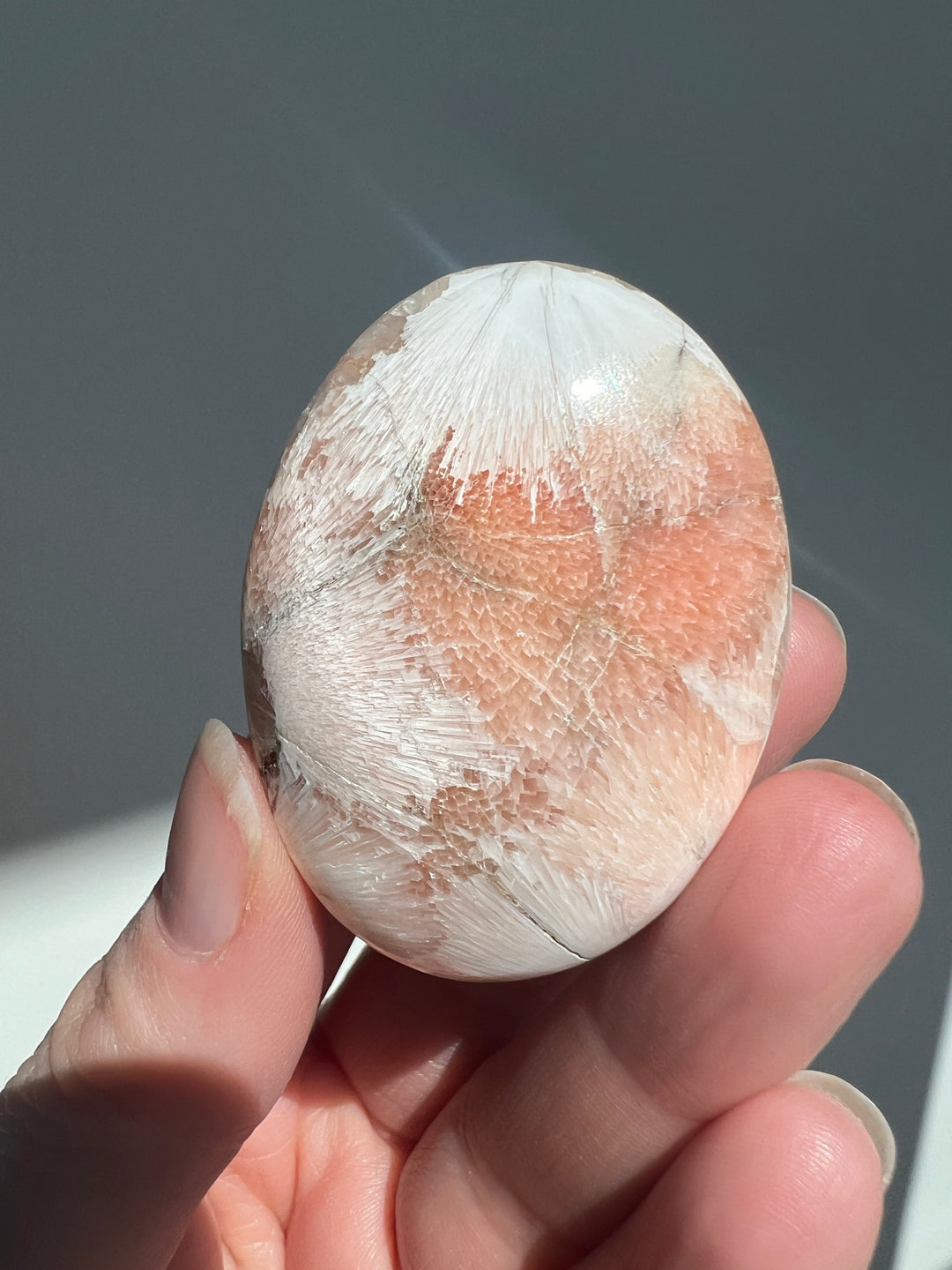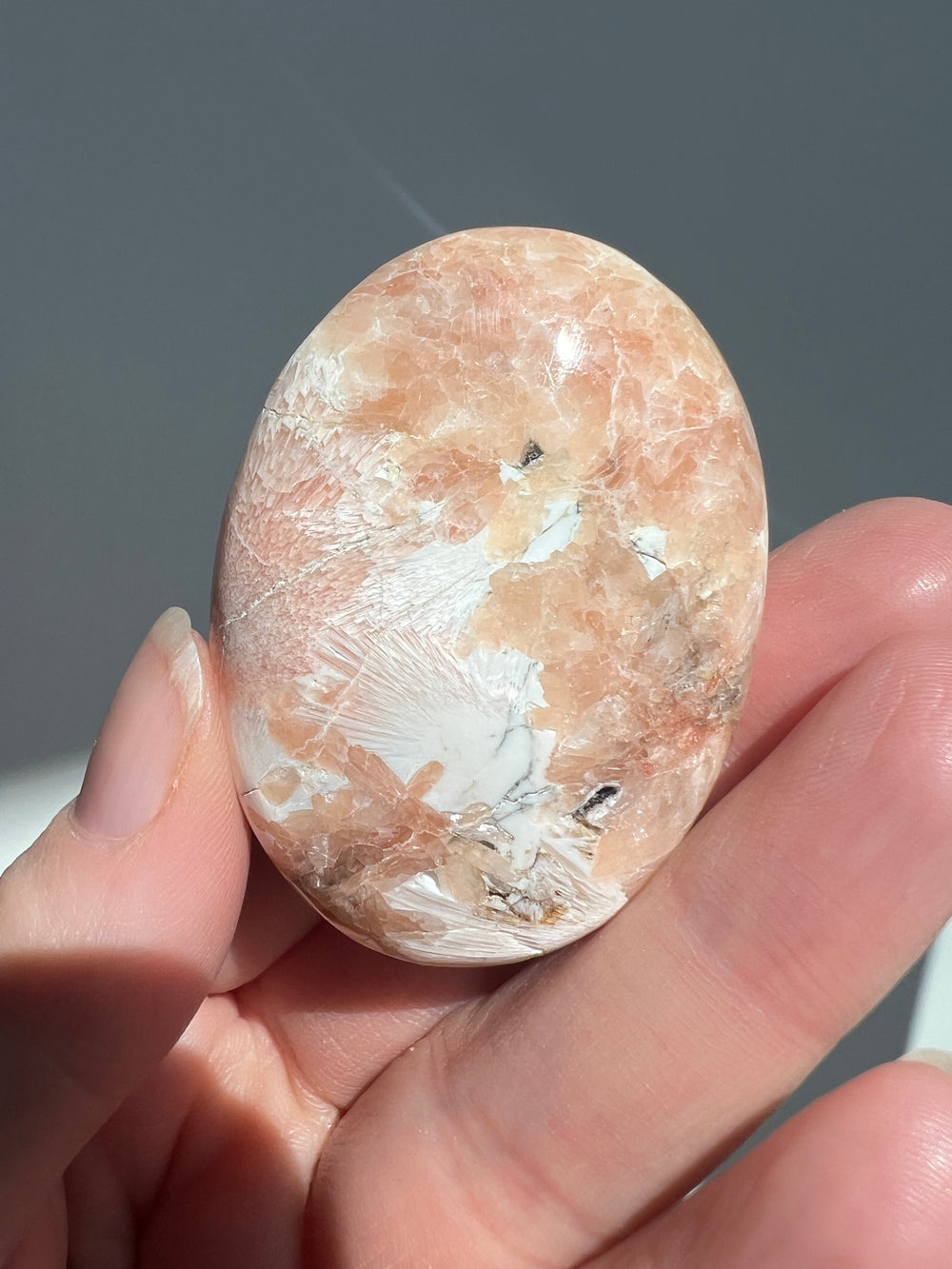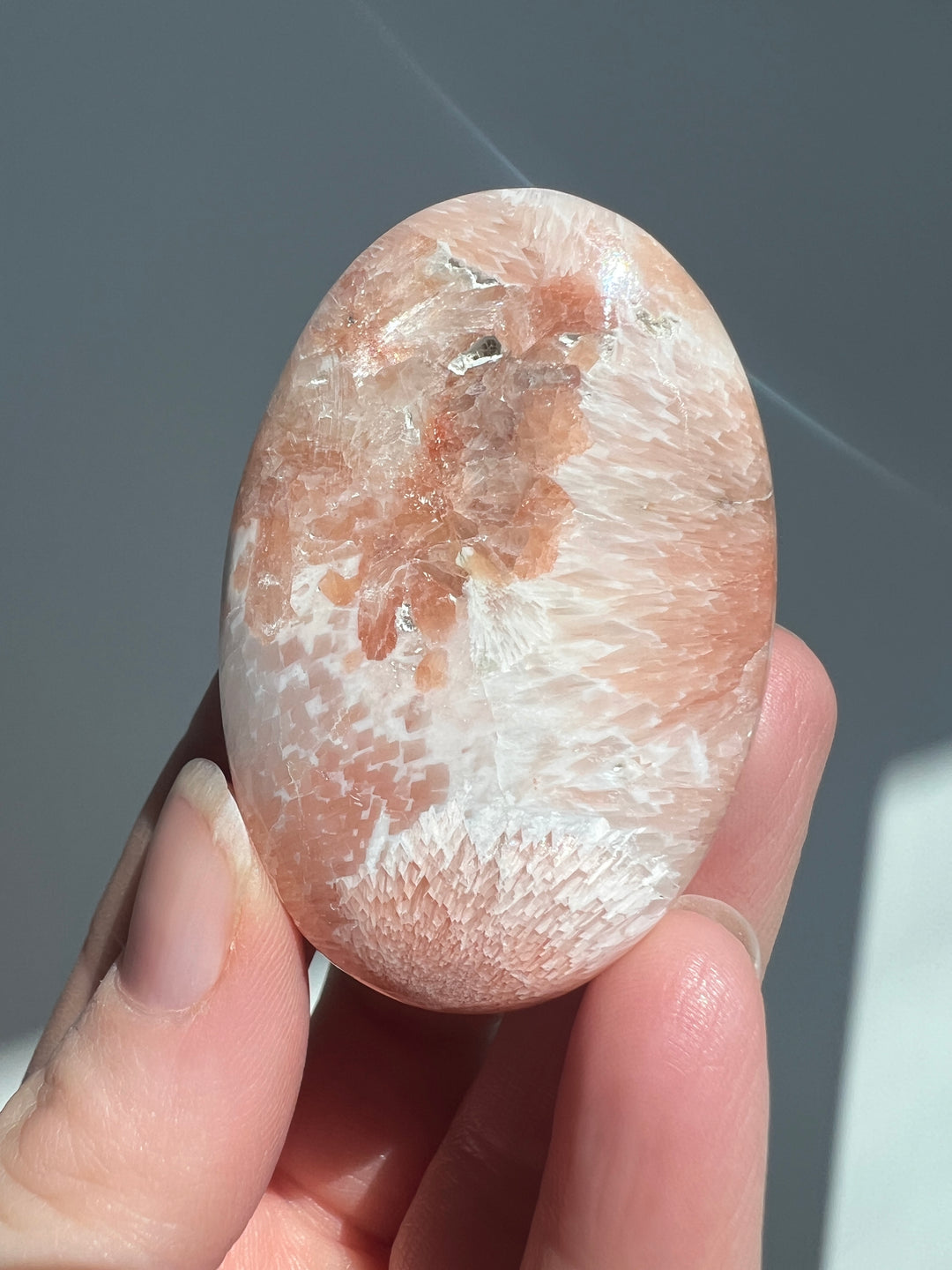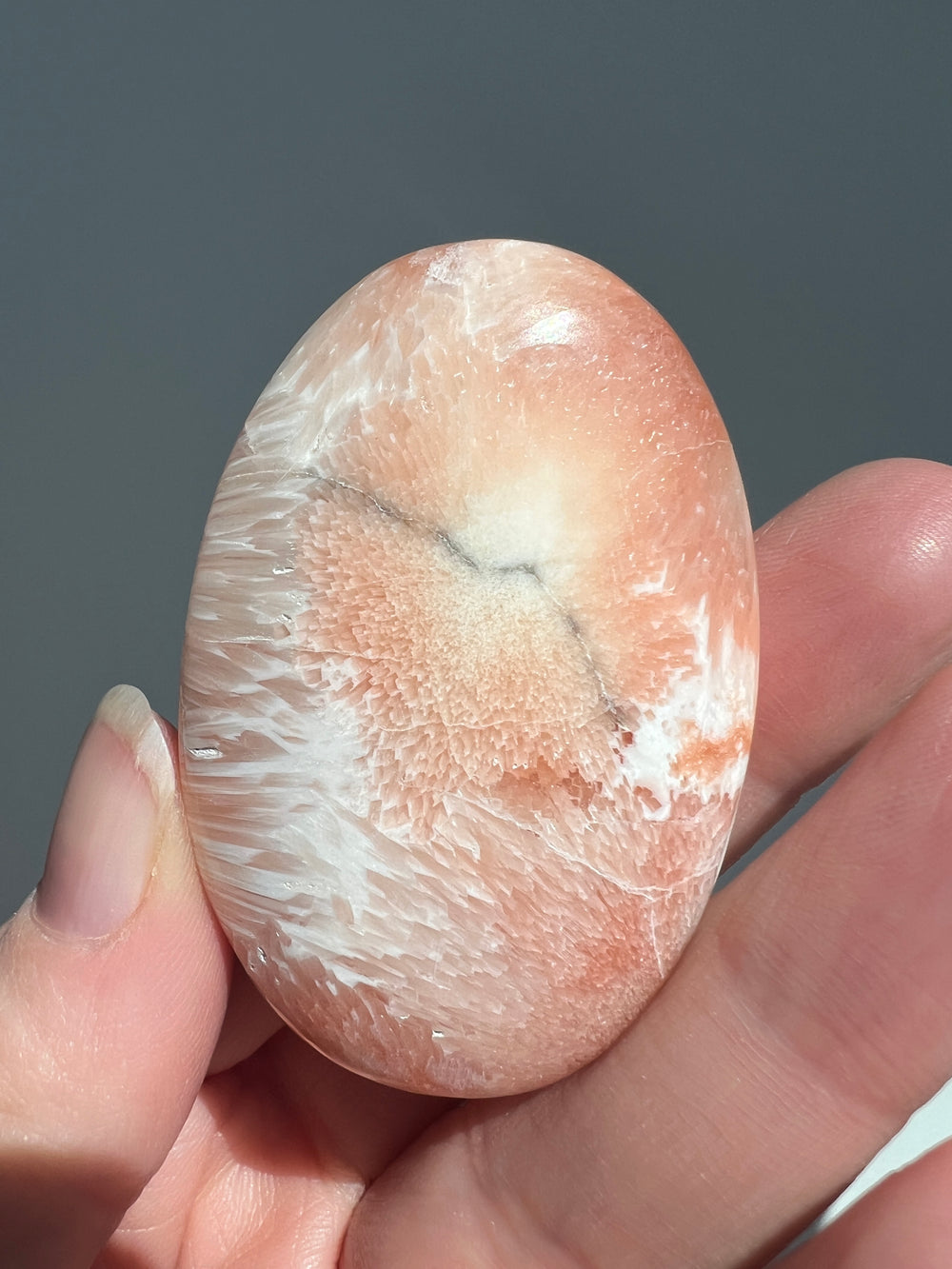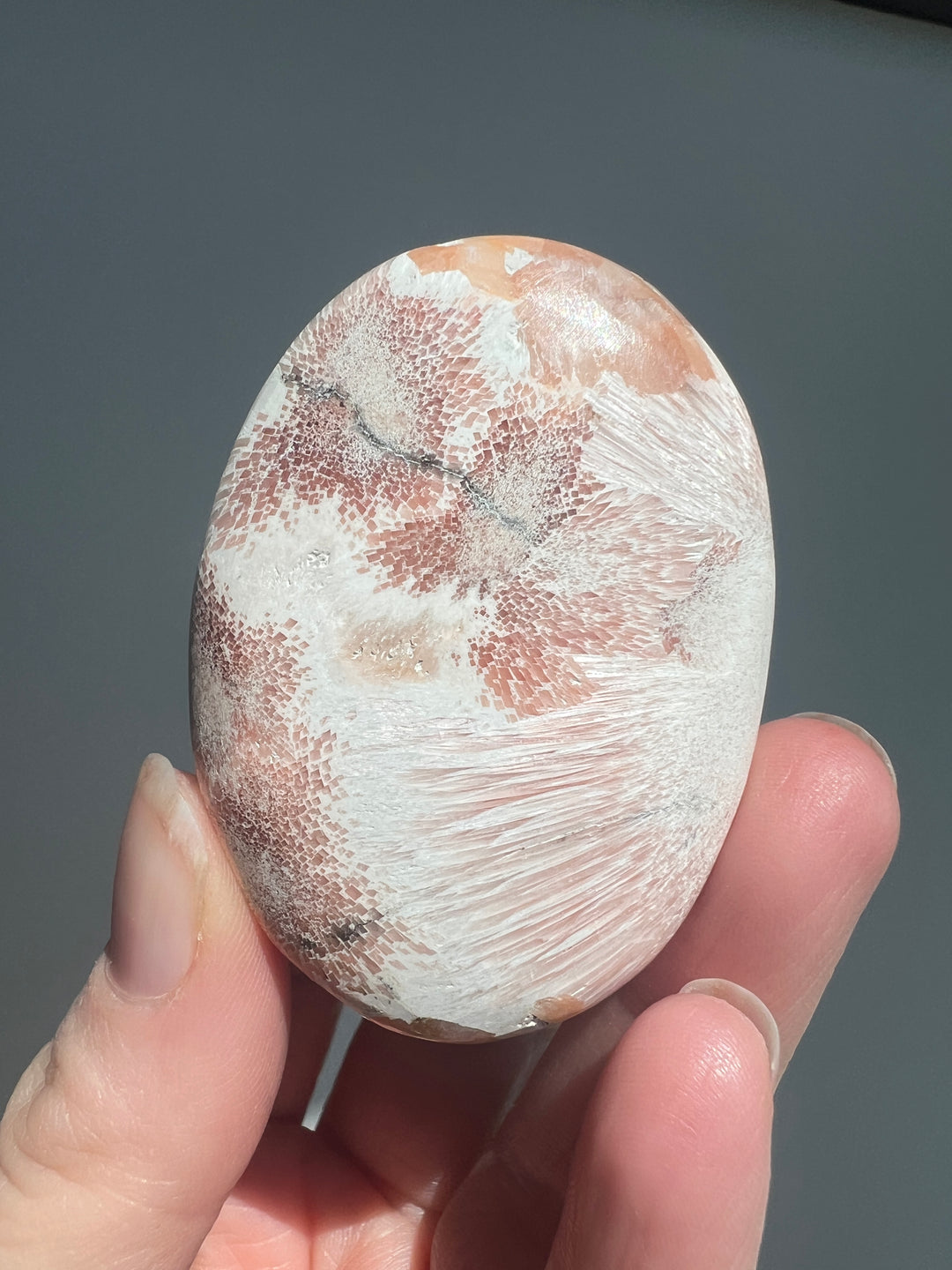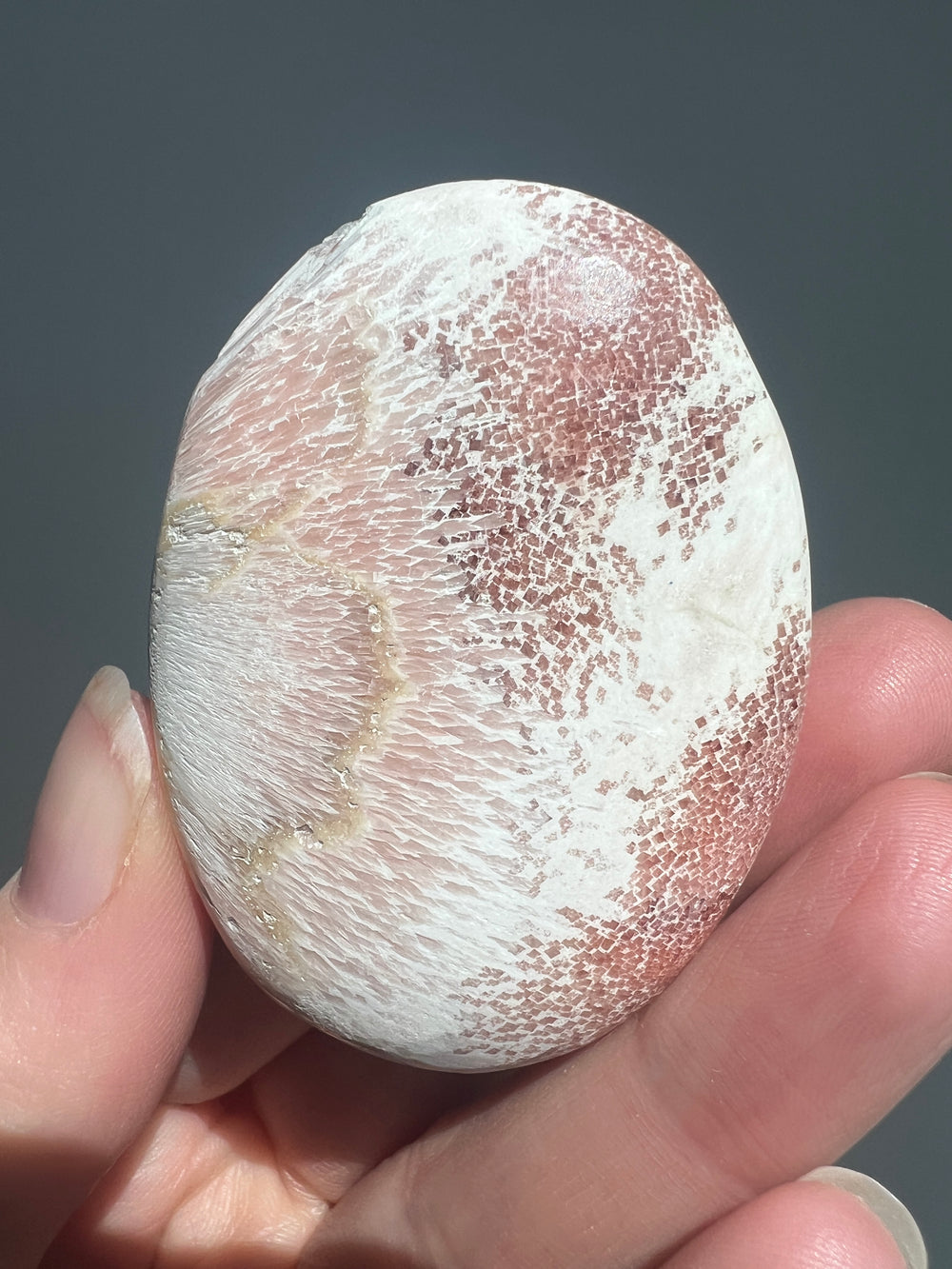Peach Scolecite | FAQ
Q: What is Peach Scolecite? A: Peach Scolecite is a variant of the mineral scolecite, known for its unique peach or pinkish hue. Scolecite itself is a member of the zeolite group and is typically white or colorless. The peach color in this variety is usually due to the presence of trace impurities or inclusions within the mineral. Peach Scolecite is appreciated for its delicate color and intricate crystal formations.
Q: What healing properties are attributed to Peach Scolecite? A: Peach Scolecite is believed to carry several healing properties. It's thought to promote inner peace, enhance meditation and spiritual transformation, and facilitate deep relaxation and tranquility. Additionally, it's said to foster emotional healing, enhance communication, and encourage a sense of serenity and balance.
Q: How can Peach Scolecite be incorporated into meditation or spiritual practices? A: In meditation and spiritual practices, Peach Scolecite is used for its calming energy and ability to enhance higher consciousness. It's believed to aid in opening the crown and third eye chakras, facilitating communication with higher realms and enhancing intuition and insight.
Q: What unique characteristics does Peach Scolecite possess? A: Peach Scolecite is characterized by its peach or pinkish color, which is relatively rare for scolecite. It often forms in slender, prismatic crystals or fibrous masses and has a vitreous to silky luster. The delicate color and crystal structure make it a visually appealing mineral.
Q: What is the Mohs hardness of Peach Scolecite? A: Peach Scolecite, like other varieties of scolecite, has a Mohs hardness of about 5 to 5.5. This makes it relatively soft and suitable for careful handling, particularly in jewelry or ornamental uses.
Q: Is Peach Scolecite suitable for use in jewelry making? A: While Peach Scolecite can be used in jewelry, its relative softness and brittleness mean it should be set protectively and worn with care. It is more commonly used in pendants or earrings rather than rings or bracelets that may be subjected to more wear and tear.
Q: How should Peach Scolecite be cared for and cleaned? A: Peach Scolecite should be cleaned gently with a soft, dry cloth. Avoid using water or chemical cleaners, as scolecite can be sensitive to moisture and chemicals. It's also advisable to protect it from sharp blows, heat, and prolonged exposure to direct sunlight.
Q: What significance do the color and patterns of Peach Scolecite hold? A: The peach or pink color of Peach Scolecite is often associated with love, emotional healing, and nurturing energy. The stone is believed to resonate with the heart chakra, encouraging compassion, empathy, and understanding in relationships and self-reflection.
Q: What metaphysical properties are associated with Peach Scolecite? A: Metaphysically, Peach Scolecite is considered to be a stone of transformation and spiritual awakening. It's believed to enhance meditation, aid in releasing negative emotions and patterns, and to facilitate a connection to higher spiritual planes and inner peace.
Q: What are the geological properties of Peach Scolecite? A: Geologically, Peach Scolecite is a hydrous calcium aluminum silicate. It forms in volcanic rocks and is often found in basalt cavities, granite, and syenites. Its unique peach color is likely due to trace mineral impurities.
Q: Can you explain the scientific properties of Peach Scolecite? A: Scientifically, Peach Scolecite's chemical formula is CaAl2Si3O10·3H2O. It has a monoclinic crystal system and is part of the zeolite mineral group. The peach color is attributed to trace elements or inclusions within the mineral structure.
Q: What is the mineral composition of Peach Scolecite? A: The primary composition of Peach Scolecite includes calcium, aluminum, silicon, and oxygen, along with water molecules. The specific trace elements contributing to its peach coloration vary and may include iron or other minerals.
Q: Does Peach Scolecite fade or change color over time? A: Peach Scolecite is generally stable in color. However, like many minerals, it should be protected from harsh chemicals and excessive sunlight, which could potentially alter its appearance over time.
Q: How can I distinguish between real and fake Peach Scolecite? A: Genuine Peach Scolecite has a natural, delicate peach hue and typically forms in slender, prismatic crystals or fibrous structures. Fakes or synthetic versions may lack the natural crystal formation and subtle color variations of real scolecite.
Q: How is Peach Scolecite formed? A: Peach Scolecite forms in a similar manner to other scolecite varieties, typically in volcanic environments. It crystallizes in cavities within basalt or other volcanic rocks, often as a secondary mineral formed from the alteration of other silicates.
Q: Are there different types or variations of Peach Scolecite? A: Variations in Peach Scolecite mainly involve the intensity of its peach color and the form of its crystal structure. Some specimens may exhibit a more intense hue or a different crystal habit, but all share the characteristic color and composition of scolecite.
Q: What's the historical significance of Peach Scolecite? A: While scolecite has been known to mineralogists for some time, Peach Scolecite, in particular, is appreciated for its unique color and aesthetic appeal. It has gained popularity in recent years among collectors and practitioners of crystal healing.
Q: What is the origin of Peach Scolecite? A: The term "Peach Scolecite" is derived from its color, reminiscent of a peach. It is found in regions known for scolecite deposits, such as India, Iceland, and the United States.
Q: Where is Peach Scolecite typically found? A: Significant sources of Peach Scolecite include India, where it's commonly found in the Deccan traps, as well as in Iceland and parts of the United States. The specific geological conditions in these areas contribute to the formation of this unique variety of scolecite.
Q: How rare is Peach Scolecite? A: Peach Scolecite is relatively rare compared to the more common white or colorless varieties of scolecite. Its unique coloration and crystal structure make it a sought-after specimen for collectors and enthusiasts of minerals and crystals.


